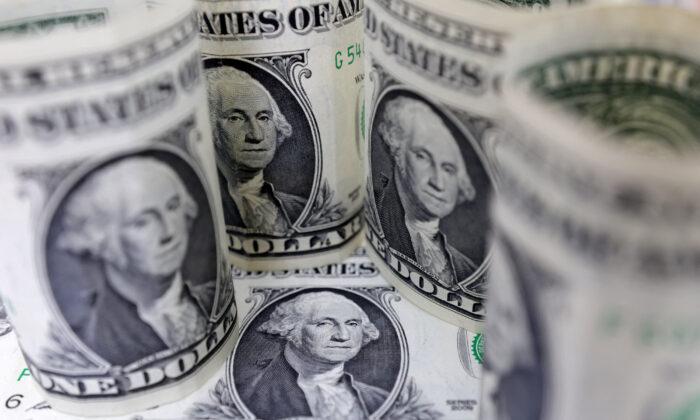SINGAPORE/LONDON—The dollar steadied on Tuesday as traders looked ahead to U.S. midterm elections, and as excitement dimmed around China relaxing coronavirus restrictions, which had been boosting investor sentiment and weighing on the safe haven U.S. currency.
A conclusive result to the midterms could take days, but forecasts are for a Republican victory, at least in the House of Representatives, and consequently likely gridlock in Congress.
Some analysts say that outcome could be positive for bonds and negative for the dollar if it leads to less fiscal stimulus.
“If we get a gridlock outcome or Republican sweep, it won’t be so easy to get fiscal stimulus through next year, which means then that (Federal Reserve chair Jerome) Powell can afford to take the foot off the interest rate hike accelerator,” said Damien Boey, chief macro strategist at Barrenjoey in Sydney.
The aggressive pace of U.S. rate hikes has caused U.S. Treasury yields to rise and pushed the dollar to multi-year highs against most major currencies, though speculation is growing that this trend is starting to come it its end.
The euro touched $1.0031 on Tuesday, its highest in nearly two weeks, before sliding to trade down a touch, straddling the $1 level.
Sterling also fell, down 0.43 percent at $1.14655, but along with the risk-friendly Australian dollar and currencies, such as the Swedish crown that often move in line with overall market sentiment, the pound was well off its recent lows.
As a result, the dollar index, which tracks its performance against six major currencies was at 110.4 down from as much as 113.5 the middle of last week.
“The question is the cycle turning for the U.S dollar?” said Kenneth Broux, senior FX strategist at Societe Generale.
“The main take-away from last week’s FOMC is that the dollar has failed to return to the highs despite the repricing of the terminal rate, so perhaps we are reaching a point of exhaustion in the dollar’s move higher.”
“Only the future and hindsight can tell us for sure though.”
The U.S. Federal Reserve’s rate setting committee increased rates by 75 basis points last week and Chair Jerome Powell indicated that hikes would continue, causing markets to reprice expectations of the point at which they would peak.
The Japanese yen also firmed to a one-week high of 146.15 per dollar. Japanese foreign currency reserves posted the second-sharpest monthly decline on record in October as authorities spent 6.35 trillion yen ($43.37 billion)intervening to support the yen.
Another factor that has weighed on the dollar in recent days was speculation that China might relax aspects of its dynamic zero COVID policy.
China’s strict virus policy includes lockdowns, quarantining and rigorous testing, and officials said over the weekend the measures are “completely correct” and will stay. But incremental adjustments have been enough to keep traders’ from despair.
The yuan had its best day in two years on Friday, and has held most of those gains since, but gave back a little bit through Tuesday to trade at 7.2612 per dollar as fresh COVID-19 outbreaks chipped away at some of the optimism.
In cryptocurrencies, bitcoin fell as much as 6 percent to as low as $19,351 and ether dropped sharply in moves traders said were linked to concern surrounding brokerage FTX, after rival Binance said it would liquidate holdings of FTX’s native token.





